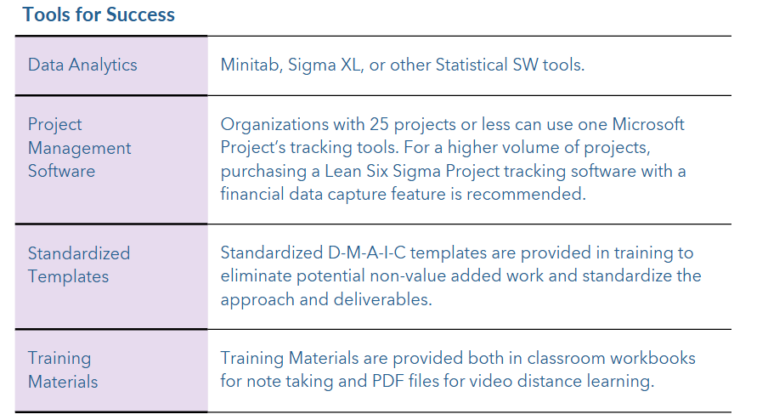

In this era of rapid digital transformation, shifting consumer expectations, and increased regulatory pressures, businesses must adapt to change faster and more often than ever. Across all industries, organizations face increasing pressure from stakeholders to become more efficient and to perform beyond financial metrics, incorporating environmental and social impacts into their definition of success.
Organizations must prioritize adaptability and integrate a continuous improvement mindset to keep up with this accelerated rate of change and expanding expectations. Business Excellence, or BEx, focuses on developing management systems and processes to drive sustainable performance and deliver value for all stakeholders.
Businesses deploy BEx to create value through a variety of levers:
This guide offers practical insights into BEx deployment and fundamental strategies for success. Each of the eight best practices below provides direction for driving sustainable improvements across your organization.
Gaining buy-in for a new methodology
The foundation of successful BEx deployment is built by equipping leadership with the proper knowledge and tools and gaining genuine support for change. Leaders play a crucial role in ensuring the success of any business initiative, and for BEx to truly take root in an organization, they must support and actively engage in the process. Often, this is easier said than done.
This is because most organizations’ leadership are traditionally rewarded for their ability to efficiently handle problems or “put out fires”. BEx requires a shift away from this approach – building systems and processes that prevent fires from starting in the first place. This shift can feel counterintuitive and uncomfortable to leaders accustomed to – and recognized for – hands-on crisis management.
Applying proven continuous improvement methodologies like Lean Six Sigma (LSS) provides a structured approach to eliminating inefficiencies and driving sustainable improvements. However, the adoption of a new methodology requires leaders to admit the current process (or lack thereof) isn’t working, and that they don’t know exactly how to solve the problems facing the business. Understandably, this often causes reluctance and discomfort during adoption, creating friction within the new process. This is why leadership engagement and training are essential to adopting more effective problem-solving that doesn’t rely solely on experience or instinct: without true buy-in at the top, new methods will meet with resistance at every turn.
Key elements of BEx leadership engagement and training are:
Mitigating Pitfalls
If a leadership team isn’t fully invested in BEx, success will be extremely hard to achieve. Committed leaders will actively participate every step of the way, asking insightful questions and selecting suitable projects. Without this consistent engagement, BEx risks becoming another “initiative of the month” that eventually fades away without reaching its potential for value creation.
Monitoring engagement indicators throughout training will help identify anyone not yet invested in the process so the issue can be addressed.
Engagement Indicators:
Discussing BEx as a cultural change vs. a project
Active and thoughtful participation vs. “smiling and nodding”
Asking questions
Suggesting projects or issues to work on
Willingness to contribute high-performance team members to the BEx team
Building out the BEx Team
Another critical part of the BEx foundation is designing an organizational structure that enables objectivity, accountability, and clear communication to run the program. To achieve this, a team should be formed of skilled problem solvers, structured as a silo outside of any existing function. Typically, the group will consist of operations leaders and other high-ranking staff, as this will position the team for the greatest likelihood of success. Leadership visibility and support are directly correlated to the effectiveness of the program.
The BEx silo should be led by an individual who has been selected based on three factors: the candidate
must be impartial to the rest of the organization, understand the key deliverables, and have the experience and capabilities needed to manage a team. The group as a whole will then be responsible for the following:
As the group that runs the program, all members must understand the long-term purpose of BEx and its alignment with the company’s goals and vision. As with leadership, some group members may view continuous improvement as a project rather than a cultural change, putting them at risk of dropping out. Each member must be taught the same methodology from the start to ensure the group is aligned and that each member stays the course and continues to ingrain BEx into the organization’s culture in the future.
Propagating continuous improvement
Once the BEx Team is in place, it’s time to identify the individuals/leaders who will join the team and lead the charge for continuous improvement. A proven method is to pull in high-potential top talent – those with a knack for problem-solving, strong business acumen, and a drive to improve.
The success of BEx is entirely dependent on selecting candidates with these attributes. Take time to search for standout performers tired of fixing things the same way every day, as well as those known to be collaborative team players. They must be diverse individuals who can break down the data while also having the ability to adapt to work across the organization. Consult human resources to uncover these key staff and assist with the interview process.
Once participants have been pulled from their day jobs, they will be enrolled in Black Belt Training. Over two years, they will take on critical projects that address the organization’s most pressing challenges, creating substantial value along the way. This approach not only helps ensure successful BEx implementation but also helps ingrain continuous improvement into the culture of the organization in the future. Upon completion of these initial projects, team members should return to their functions at a higher level than they normally would have achieved during that time frame, having solved influential problems and propagated a culture of continuous improvement.
$8.4M EBITDA Impact
This approach was exemplified by Adonis’ work with a leading technology solutions provider. Over 500 employees underwent Lean Six Sigma training, which shifted the company’s culture by creating an environment where kaizen solves problems daily. This shift resulted in a mindset where defects and issues are seen as opportunities, with an $8.4M impact on EBITDA over four years.Asking high-performance employees to step away from their roles for two years can cause uneasiness, so it’s critical to communicate the opportunity to these individuals effectively. Overcome uncertainty by showcasing the value proposition—a designated career path created by HR, promotion to a much higher level in just two years, a financial incentive of a bonus, and clear leadership support. Don’t forget to include the candidates’ managers in this discussion early and to establish the value behind the program and its long-term benefits. Understandably, many managers don’t want to give up the best people on their team, so it’s critical to obtain their buy-in with support from their executive leadership.
“Think big, start small, move fast”
The cornerstone of Business Excellence deployment is the execution stage, which consists of strategic project selection, effective sponsorship, coaching and execution. Just as selecting personnel was vital in the previous stage, project selection is just as critical here. The big three questions in every project are: What’s the problem? What are the metrics you want to change? What’s the impact on the business?

Key project selection criteria include:
Alignment – projects with business impact that directly aligns with the company’s key objectives.
Scope – defining the scope of potential projects to identify those with achievable, quantifiable goals and those that are too broad.
Impact – ideal projects offer “leapfrog innovation”, meaning that every project is replicable such that wins can be multiplied across other product lines, locations, or initiatives for maximum ROI.
Remember that you’re not trying to solve everything at once. Every project must have concrete and quantifiable results. Establish benchmarks and metrics to quantify current and future state.
For instance, an Adonis Partners consultant worked with a business that wanted to benchmark days sales outstanding (DSO). Their current state was 63 days for a $2.3B account, while a competitor’s was just 33 days. Adonis helped the client reduce DSO to 32, saving the company $16M annually.
$800k Postage Cost Reduced
A typical black belt project takes six months, so choose wisely. Delivering “quick wins” is a great way to showcase the methodology’s effectiveness and gain buy-in from stakeholders during implementation.
A prime example is Adonis’ work with a healthcare revenue management company, cutting their postage costs by $800k through training frontline staff on PDCA and then replicating the project across three sites in just five months.
The 3-Step Financial Benefits Process
Using a structured approach ensures that outcomes are rigorously tracked and validated, providing a clear, data-driven view of how BEx contributes to success.
1. Initial Benefits Estimation — Expected improvements are collected before the project launch, setting the baseline for measuring impact and aligning objectives.
2. Benefits Validation Before Project Closure — Once improvements have been implemented, all outcomes must be validated for accuracy and alignment with initial projections.
3. 12-Month Realized Benefits Audit — After project completion, this audit cycle will track final benefits. Audit frequency is dependent on the project’s value: monthly for large-impact projects, quarterly for medium-impact projects, and annual for smaller initiatives.
Mitigating Pitfalls
Taking on a project whose scope is ambiguous or encompasses too much can lead to wasted time and resources and discourage the team. When considering each project, remember to think big, start small, and move fast.
Promoting the “big wins”
Selecting and executing projects is only half of the work; the other half is to document the work and track results. Once a project kicks off, the three primary players – the sponsor, the black belt or project leader, and the team – will take part in periodic reviews. These reviews help maintain focus on project goals, address any challenges as they arise, and ensure that everyone follows the structured methodology. The black belt will report directly to the sponsor, who will remove obstacles and provide necessary resources. In turn, the sponsor reports progress to the executive team, keeping leadership engaged and invested in the project’s success.
All progress is tracked using the DMAIC framework – define, measure, analyze, improve, and control. It is critical to adhere to tollgates at each phase of this process, ensuring that all steps have been performed correctly. More specifically, reviews with stakeholders are an essential element of this stage and should be prioritized. It’s crucial that stakeholders, whether they manage the entire division or just a single facility, are aligned on the goals and execution of the project. Towards the end of the project, the black belt will be able to present directly to the executives. Using a project scorecard throughout this stage will allow all best practices to be replicated later.
Mitigating Pitfalls
A common mistake is claiming success too early, often before the full impact of the improvement has been realized. Making this premature move can lead to a loss of momentum, undermining long-term gains.
Empowering the organization through a cascading vision…”Enthusiasm is Contagious”
Effective communication is vital to keeping all stakeholders engaged and maintaining momentum throughout the entirety of a project. Communication should begin when you start building the foundation with leadership and the project team and continue even beyond the project’s completion. When you communicate across all levels of the organization, you will find people who want to be part of the team and have insights into solving critical issues. Finding who is impacted by each problem will uncover who should be involved in the solutions and build buy-in from the ground up.
Mitigating Pitfalls
Too often communication gets overshadowed by the work of executing the project, leaving critical stakeholders in the dark. Inadequately relaying the transformation efforts will decrease the buy-in of all involved. Instead, utilize a communication plan to celebrate the successes and promote all efforts. While the program may start with just six black belts, more will volunteer to join every six months if you create awareness through big wins, further ingraining a continuous improvement culture within the company.
Incentivizing Stakeholders
Sustaining momentum hinges on motivating all stakeholders with meaningful incentives that engage participants and promote high performance. Any time a milestone is achieved, recognize the achievement across the company and generate excitement for the next phase to continue the project momentum. Establishing incentives such as bonuses, spot awards or exposure to executive leadership up-front helps bolster the value proposition for participants. Clearly outlining these incentives, whether monetary or tied to career acceleration, makes participation far more appealing to contributors – and potential future project team members.
Mitigating Pitfalls
Incentives can help address the challenge of relying solely on continuous improvement personnel to spearhead change. Enticing high-potential staff to participate in Green Belt and Yellow Belt projects will expand the program’s reach and foster a culture of shared ownership.
Creating sustainable value…”continue to sharpen the saw”
Business excellence is not a one-time initiative but an ongoing journey that thrives on continuous improvement. To effectively foster a CI culture, solicit feedback from all stakeholders. Cultivating an environment where feedback is encouraged will allow an organization to refine processes and adapt to evolving challenges.
Many executives involved in Lean Six Sigma are open to sharing their methods for continuous improvement, such as how they quantify savings. Joining professional consortiums like the American Society for Quality (ASQ) or the American Productivity and Quality Center (APQC) allows for the exchange of LSS experiences.
Another key element in continuous improvement is replication. After each project’s completion, find areas where wins can be reapplied, such as locations or different product lines. Reproducing projects will reduce the need for additional training and accelerate the improvement cycles, securing maximal gains and scalable processes.
Mitigating Pitfalls
Without broad participation, key insights and opportunities for improvement are missed. The solution is to introduce training down to the frontline level. Training all personnel in basic root cause identification and waste identification will cultivate a culture of continuous improvement company-wide.

Start Your Business Excellence Journey
As you begin your business excellence deployment, use these eight best practices to increase your chances of success. At Adonis Partners, our consultants are dedicated to helping you navigate this journey with expertise and precision. Discover how Adonis’ tailored solutions can support your initiatives to exceed goals, drive sustainable value, and transform your organization.
Get in touch with our team today.